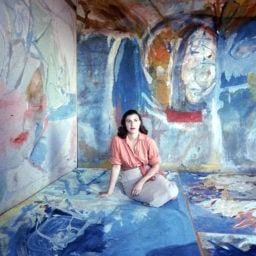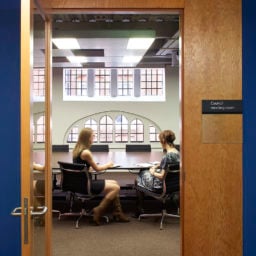In recent months, many have called for a 21st-century revival of the Works Progress Administration, the Depression-era program that provided artists including Jackson Pollock, Willem de Kooning, and Arshile Gorky with gainful employment—and produced some of the best art of the era in the process.
There is no indication that this call will be answered by the federal government. But the Office Performing Arts + Film, a performing arts and film production company with offices in London and New York, has looked to the WPA as a model to support contemporary artists across disciplines through a new national initiative called Artists at Work.
As museums and galleries shut down in March, artists were left scrambling to find work after the cancellation of shows, talks, and programs.
“Many artists’ income went immediately to zero,” Rachel Chanoff, director of the Office, told Artnet News. “A huge percentage of culture workers were left with virtually no cash coming in and no prospects for getting jobs in other sectors to wait out the crisis.”
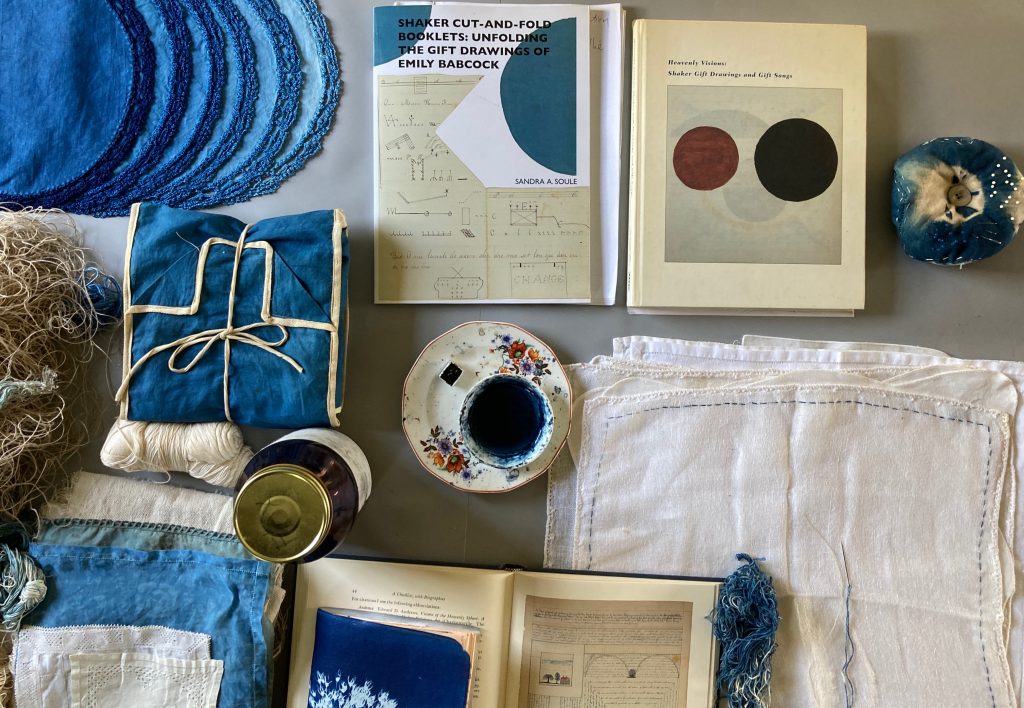
Brece Honeycutt’s work table. Photo by Brece Honeycutt.
Enter Artists at Work, which looks to pay artists for doing what they do best: making art, whether that be in the field of music, dance, film, literature, design, or the visual arts.
To the launch the initiative, the Office has raised funds to put an initial cohort of six artists on its payroll and health insurance plan for at least six months, with the potential to renew their terms for a full year. Upon finishing the programs, artists will be eligible for unemployment, and to extend their health insurance through COBRA.
A pilot program launched this month with each artist placed at one of six partner institutions in culture-rich Western Massachusetts, with an eye toward creating new work and engaging with the local community. The hosting cultural hubs each selected their own artist, either by invitation or open call, without input from the Office.
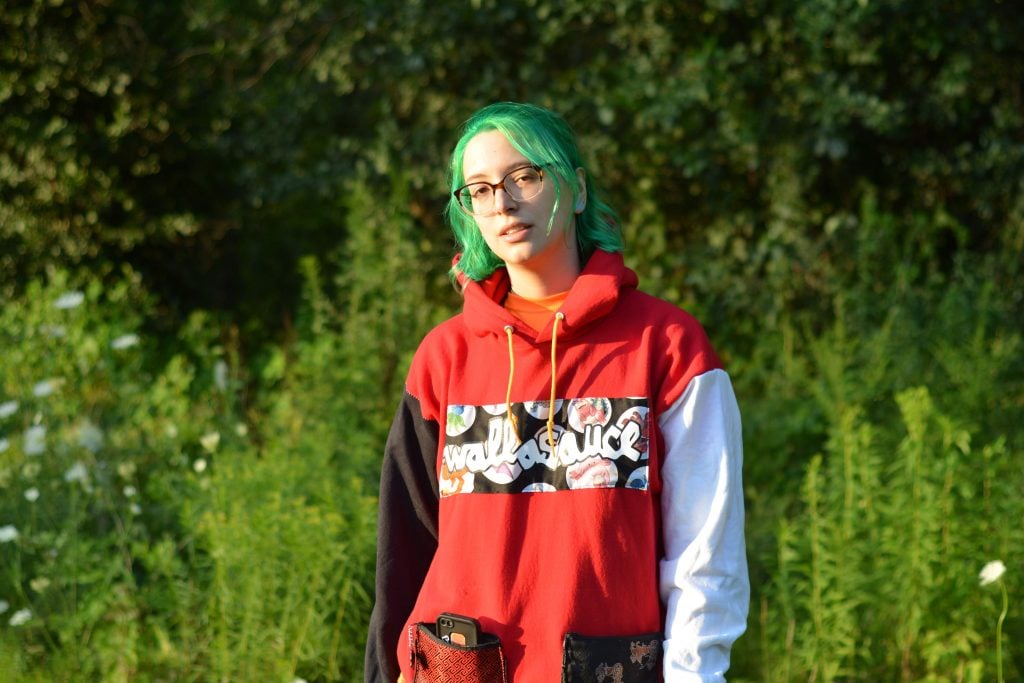
Sarah DeFusco in her WallaSauce upcycled clothing. Photo by Zach Benjamin.
Artists at Work is kicking off with projects that aim to address serious societal ills including substance abuse, poverty, mental health, and food justice. “Embedding art in social impact initiatives makes this endeavors stronger and more impactful,” Chanoff said.
In the Berkshires, Brece Honeycutt will do printmaking, sculpture, and bookbinding at Hancock Shaker Village and poet and theater artist Lia Russell-Self will lead workshops for queer youth at the Mount, the historic estate of author Edith Wharton. The Institute for the Musical Arts in Goshen, Massachusetts, has enlisted Naia Kete, a former student from the first year of their summer music program for girls, to create an EP with local youth educators from the Alianza Project.
Jacob’s Pillow, an annual dance festival that is opening a dance center in Becket, Massachusetts, has tapped choreographer Dante Brown to work with local food nonprofit Roots Rising on a sustainability project inspired by the ongoing Black Lives Matter movement.
In North Adams, Massachusetts, MASS MoCA will host local visual artist Sarah DeFusco, founder of the upcycled clothing brand WallaSauce, and Images Cinema will welcome documentarian Joe Aidonidis to work on a film about how the opioid crisis is affecting the Berkshires.
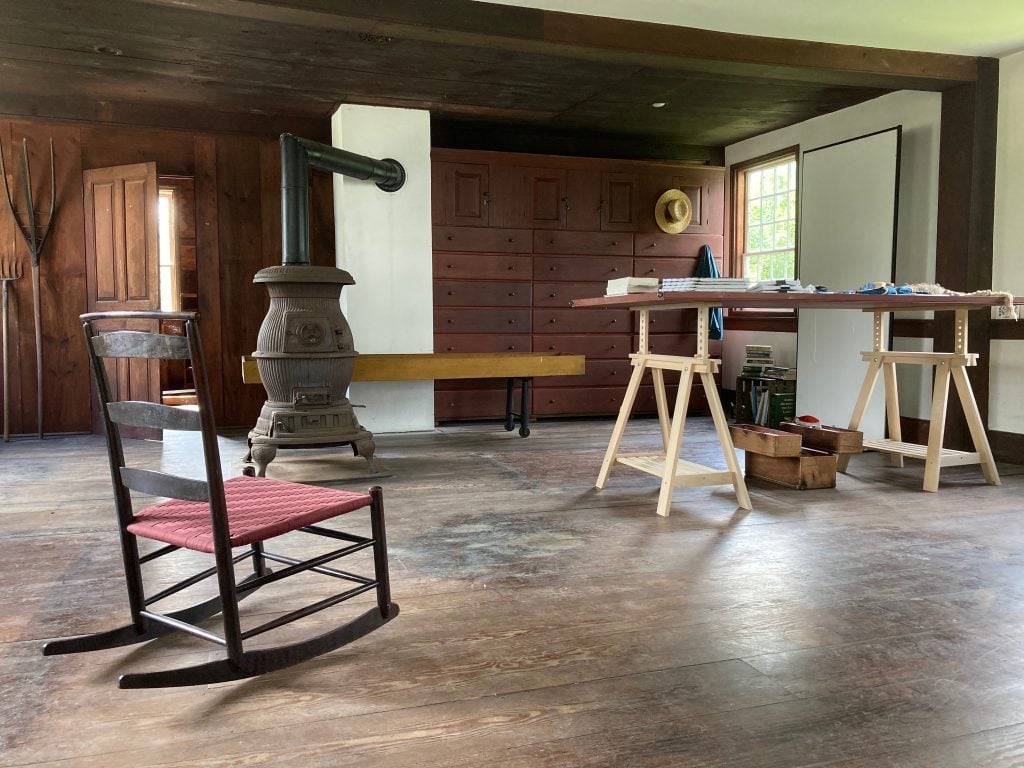
Brece Honeycutt’s studio at the Hancock Shaker Village. Photo by Brece Honeycutt.
As Artists at Work expands throughout the country, the Office plans to pay participating artists based on the living wage in the region—in Western Massachusetts, that comes to $32,000 a year. But the program has loftier goals beyond ensuring that participants can make ends meet.
“The WPA not only recognized artists as workers with the dignity that entails, but also utilized the crucial purpose of art in our society to make meaning of the world, to illuminate our own stories for us, and to create empathy for others,” Chanoff said. “We are at a precipice now where we are called to use every tool we have as a community to work together to heal the commonwealth.”







